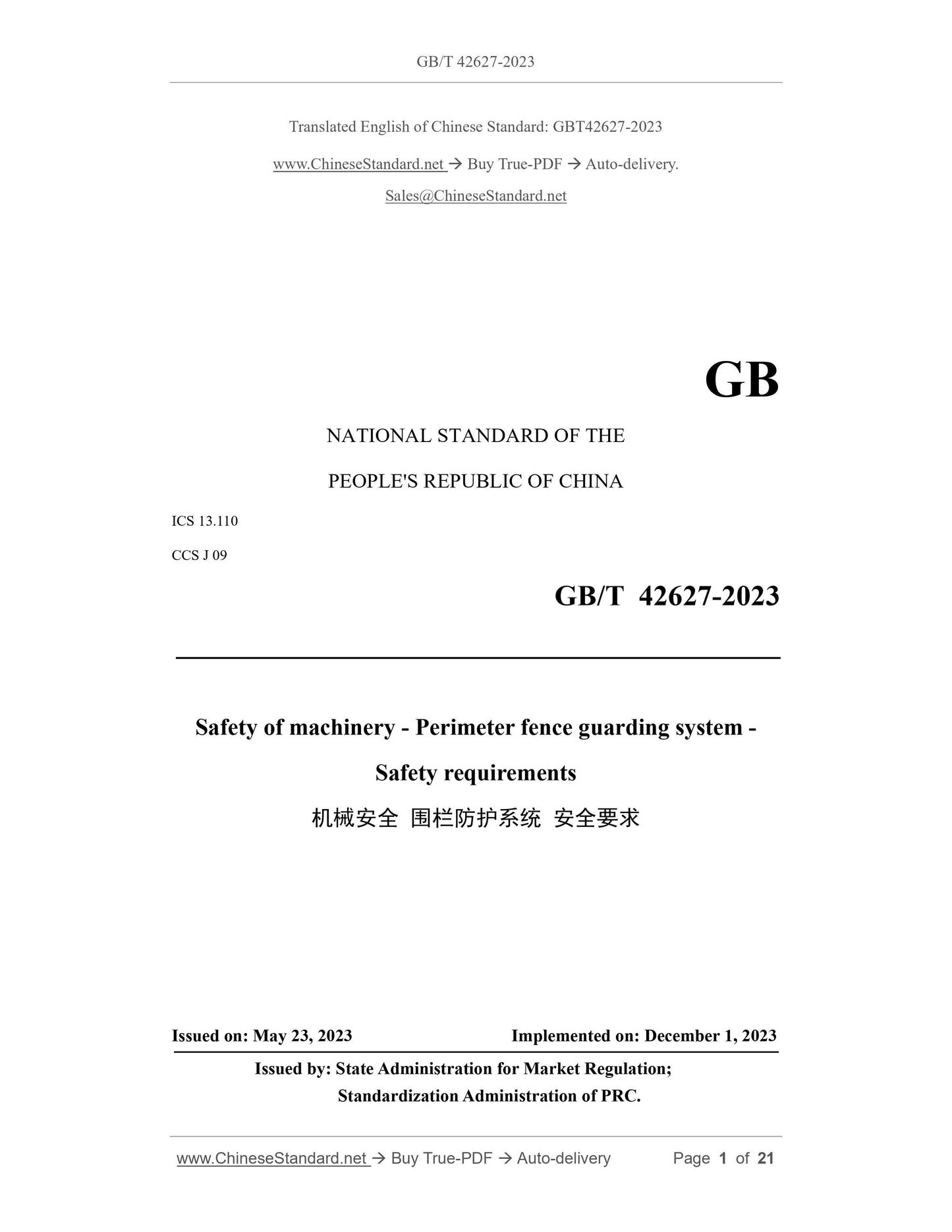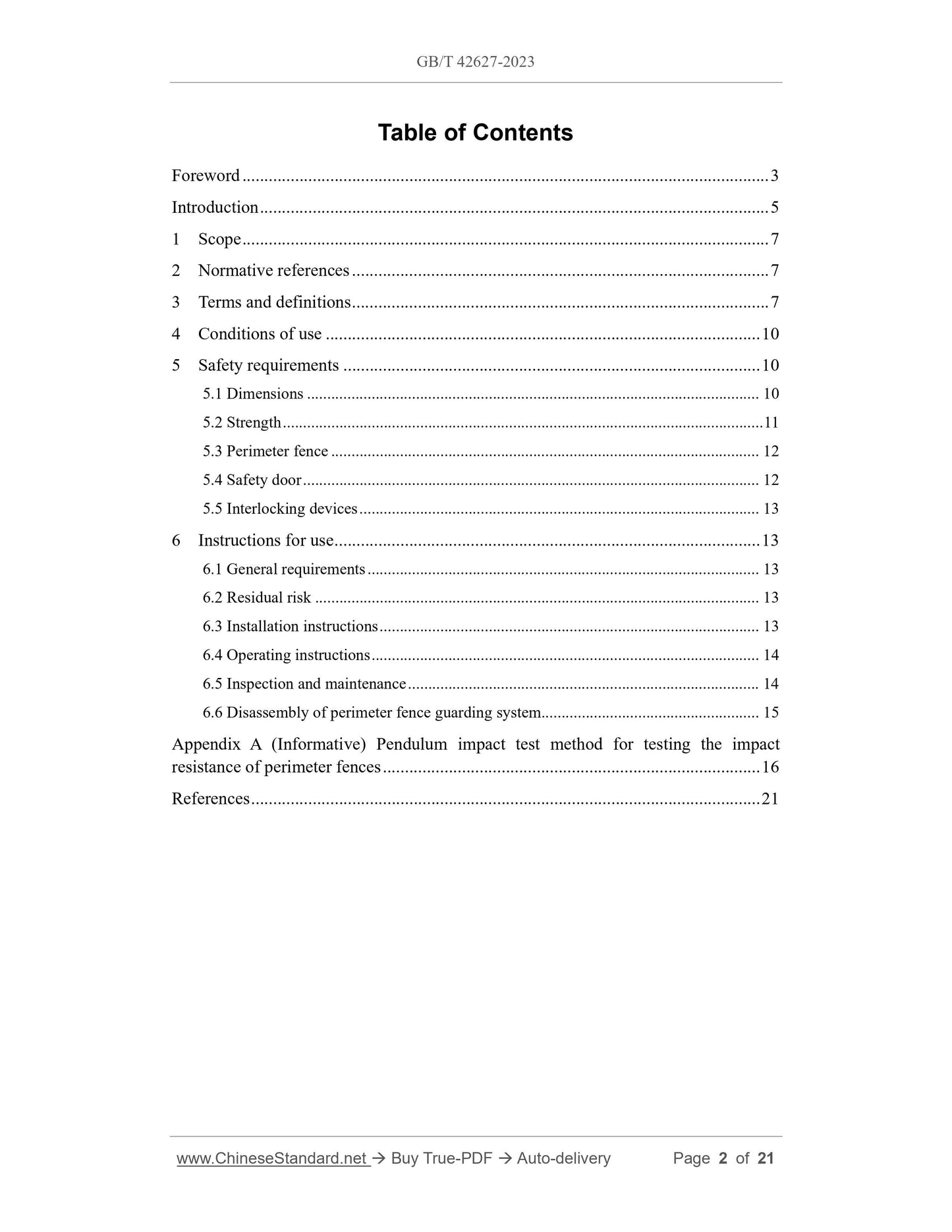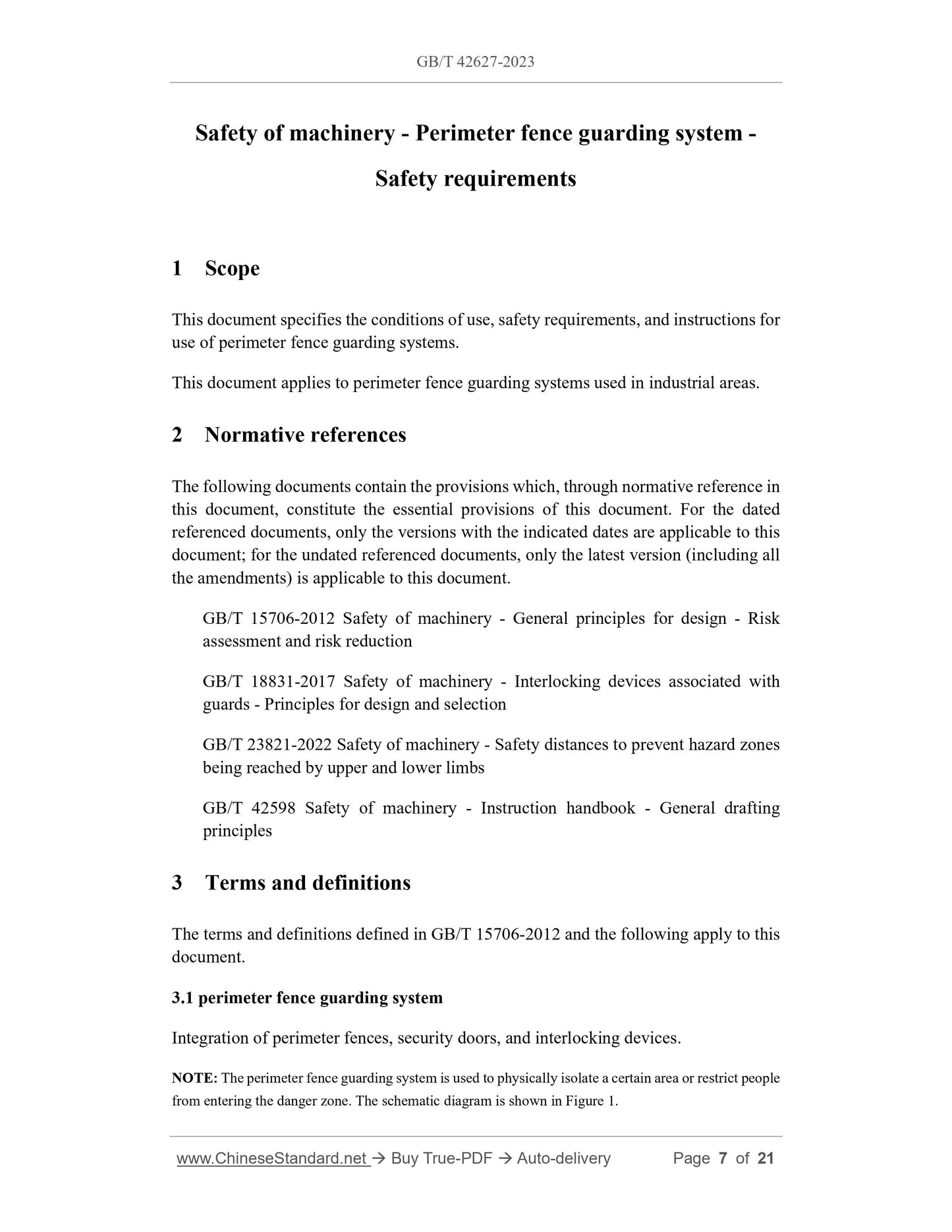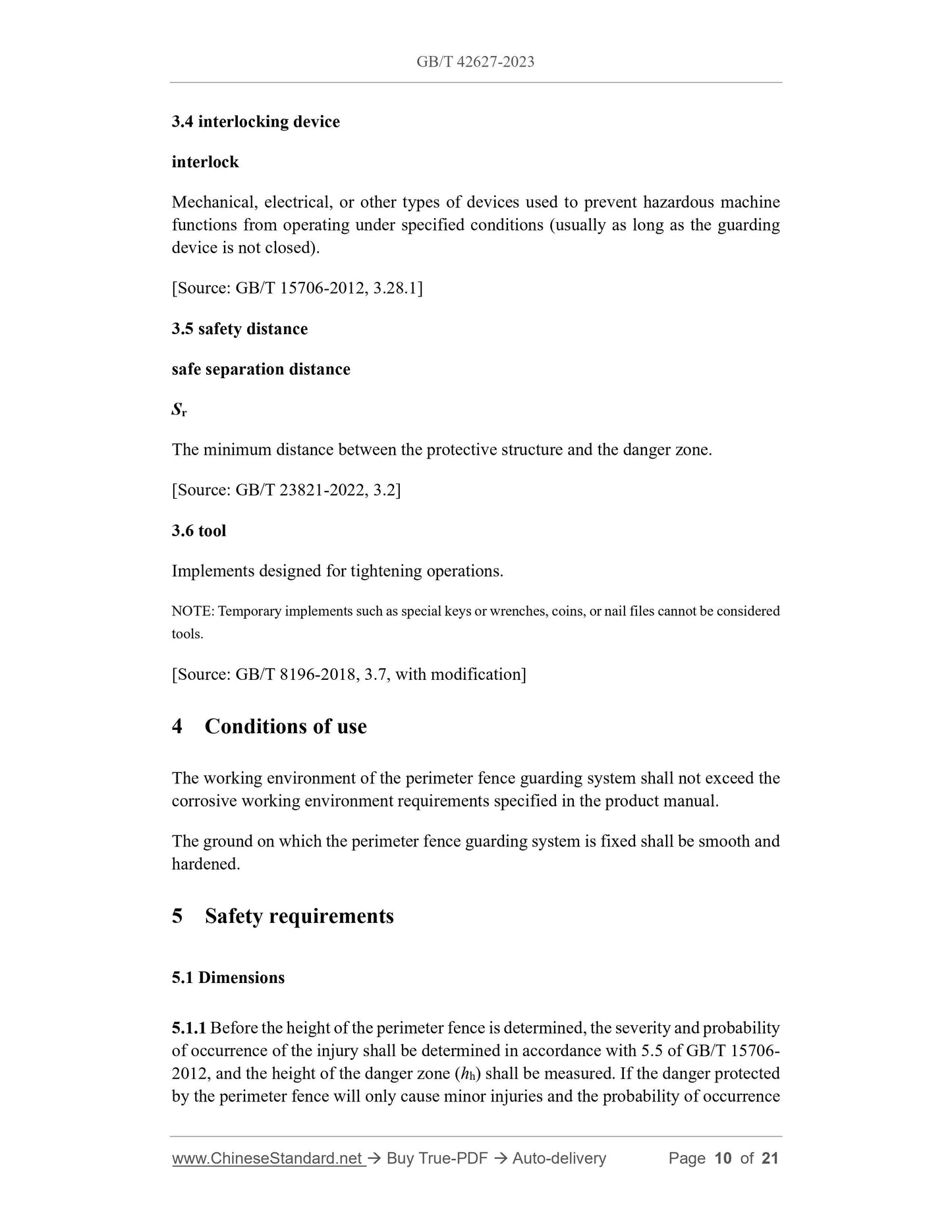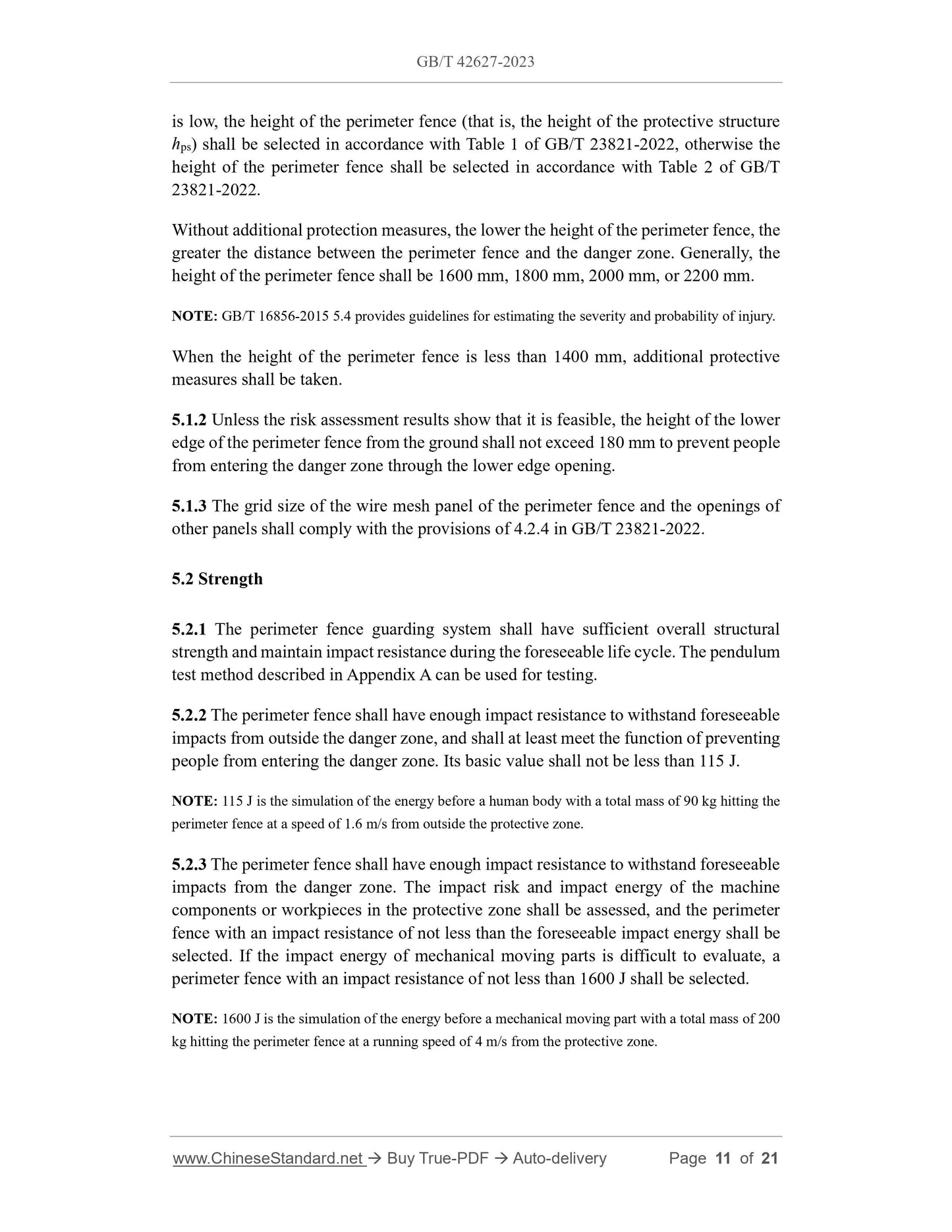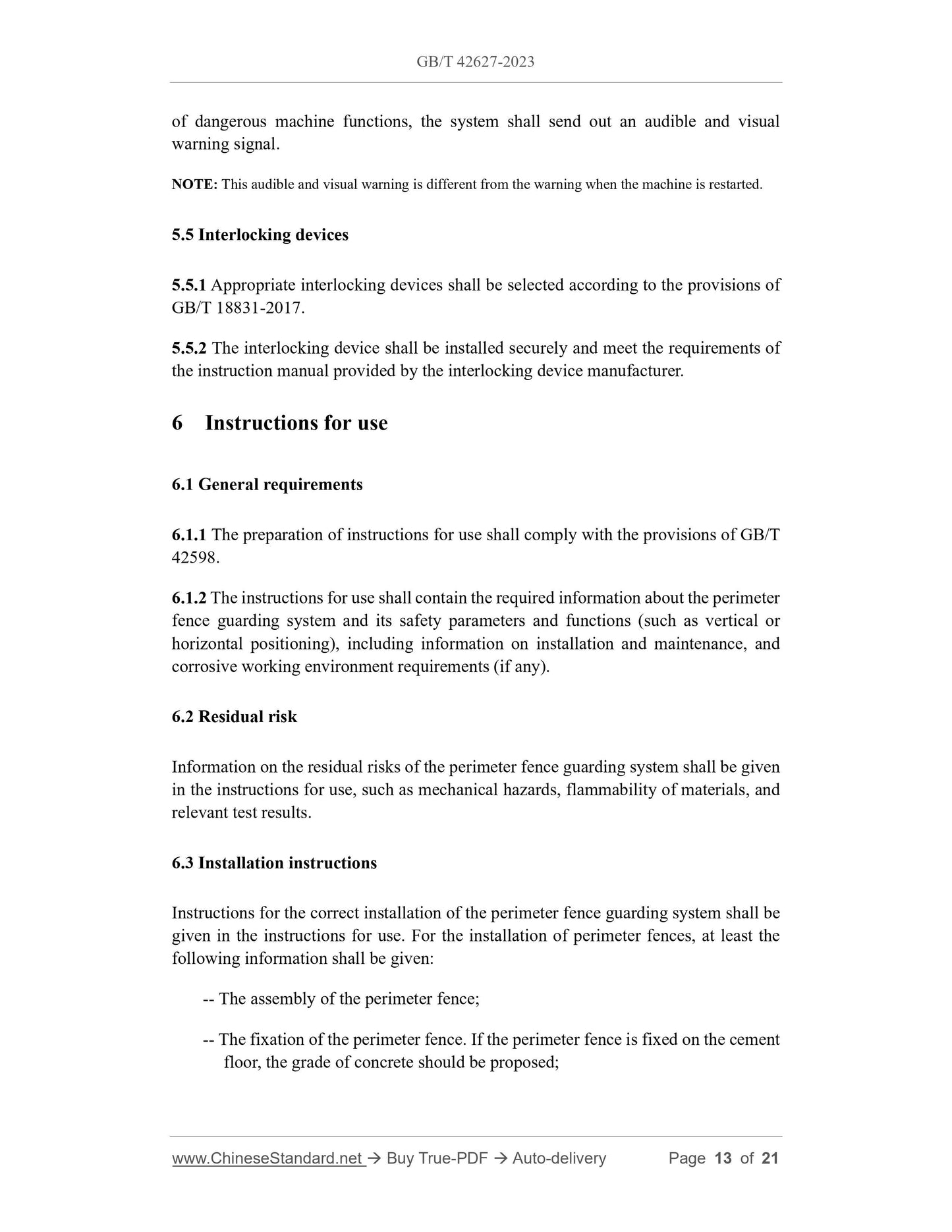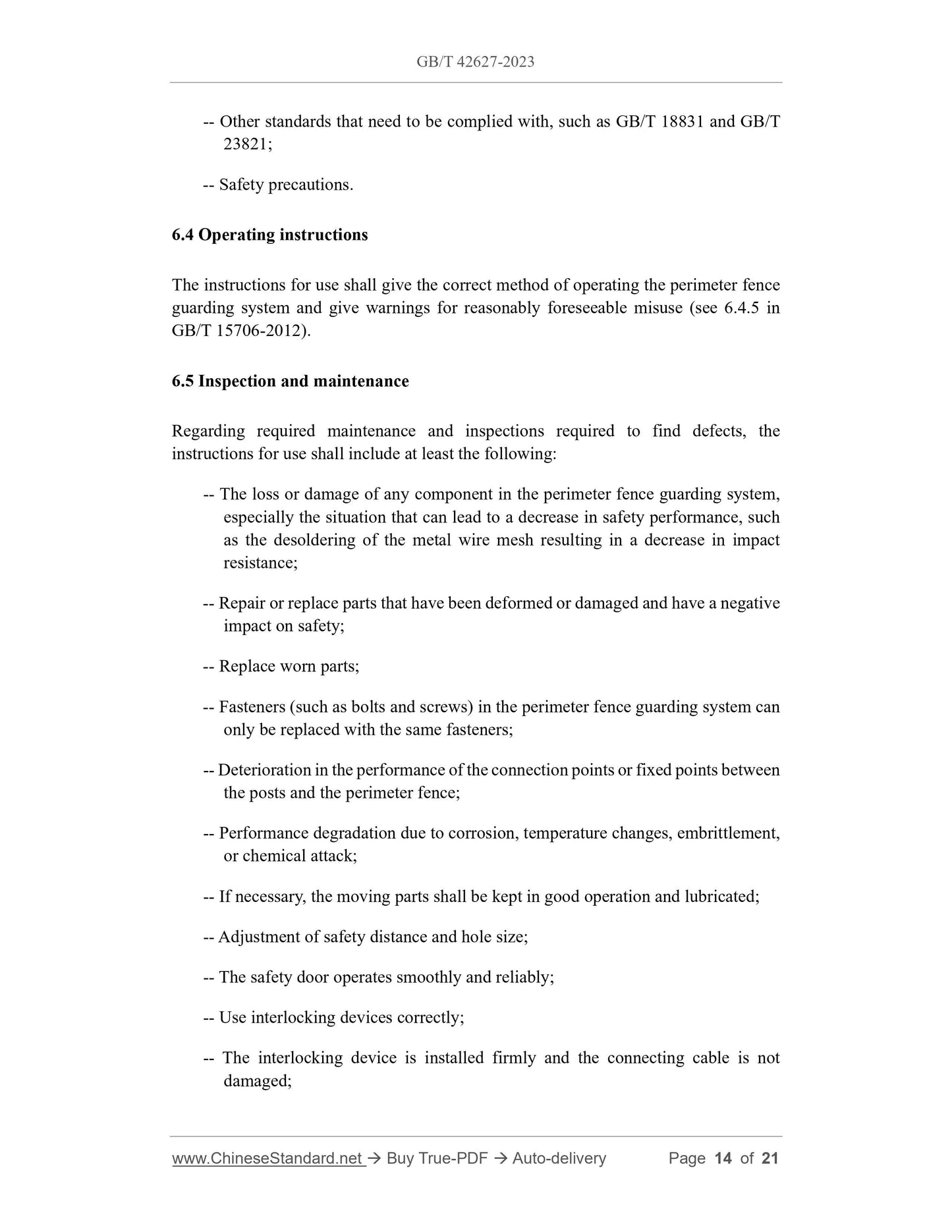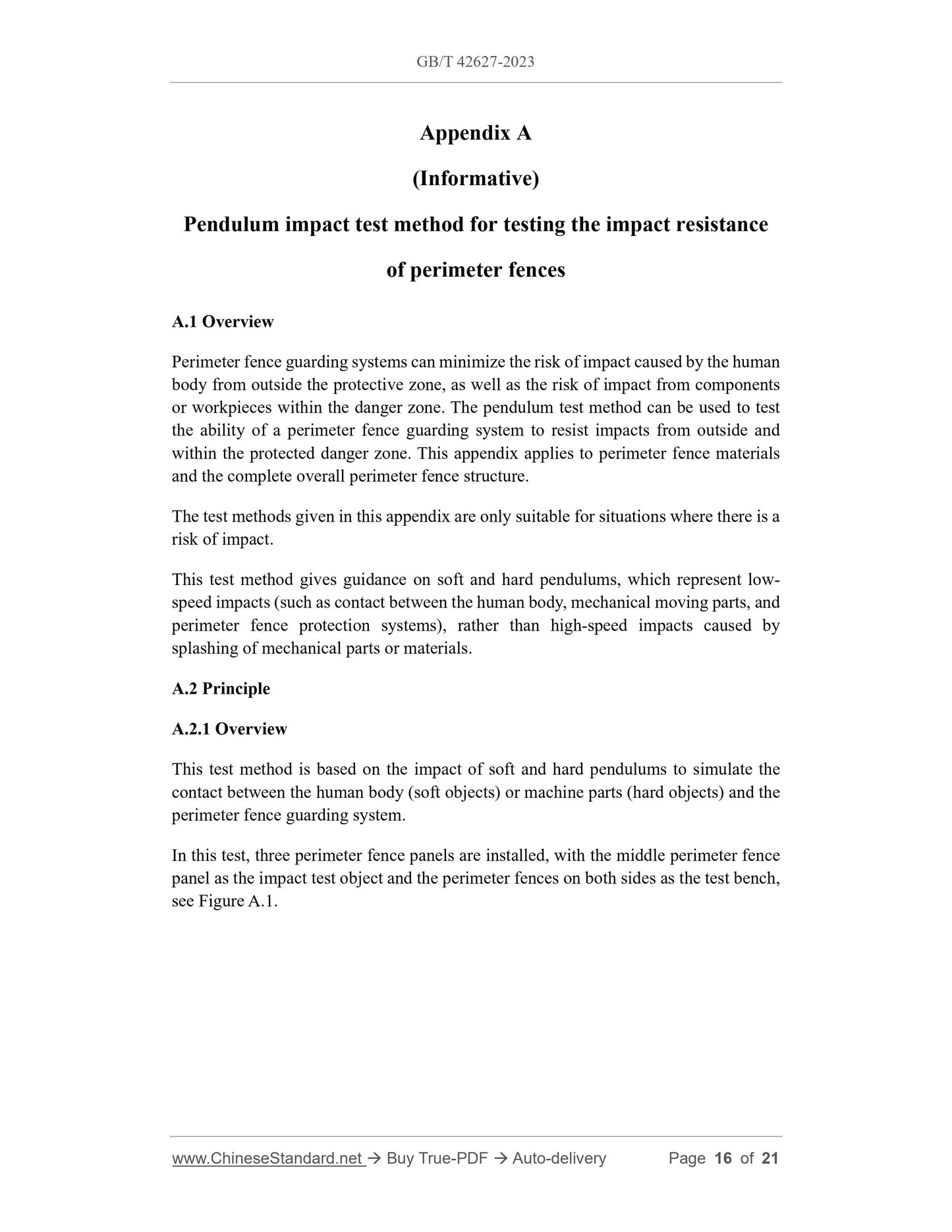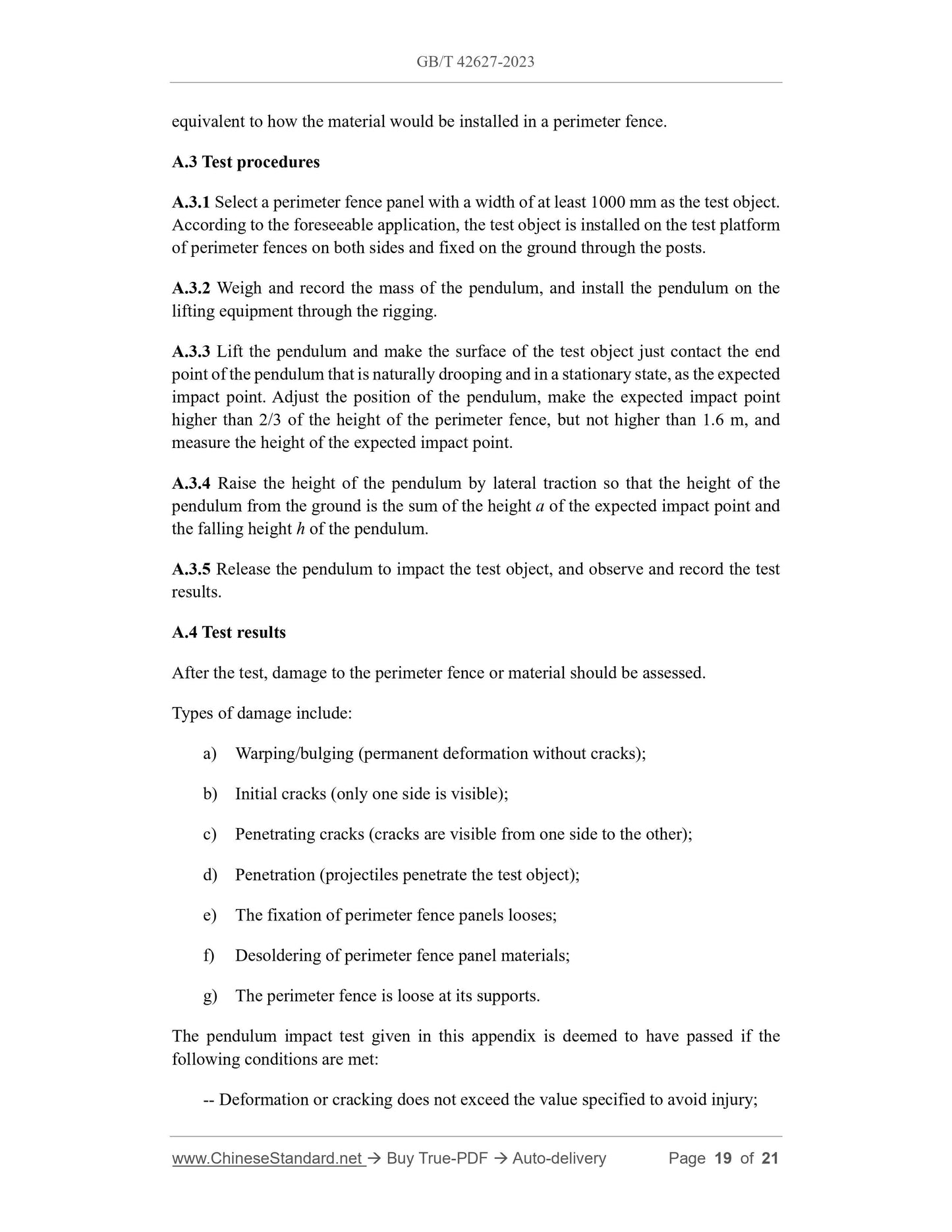1
/
of
9
www.ChineseStandard.us -- Field Test Asia Pte. Ltd.
GB/T 42627-2023 English PDF (GB/T42627-2023)
GB/T 42627-2023 English PDF (GB/T42627-2023)
Regular price
$260.00
Regular price
Sale price
$260.00
Unit price
/
per
Shipping calculated at checkout.
Couldn't load pickup availability
GB/T 42627-2023: Safety of machinery - Perimeter fence guarding system - Safety requirements
Delivery: 9 seconds. Download (and Email) true-PDF + Invoice.Get Quotation: Click GB/T 42627-2023 (Self-service in 1-minute)
Newer / historical versions: GB/T 42627-2023
Preview True-PDF
Scope
This document specifies the conditions of use, safety requirements, and instructions foruse of perimeter fence guarding systems.
This document applies to perimeter fence guarding systems used in industrial areas.
Basic Data
| Standard ID | GB/T 42627-2023 (GB/T42627-2023) |
| Description (Translated English) | Safety of machinery - Perimeter fence guarding system - Safety requirements |
| Sector / Industry | National Standard (Recommended) |
| Classification of Chinese Standard | J09 |
| Classification of International Standard | 13.110 |
| Word Count Estimation | 15,115 |
| Date of Issue | 2023-05-23 |
| Date of Implementation | 2023-12-01 |
| Issuing agency(ies) | State Administration for Market Regulation, China National Standardization Administration |
Share
